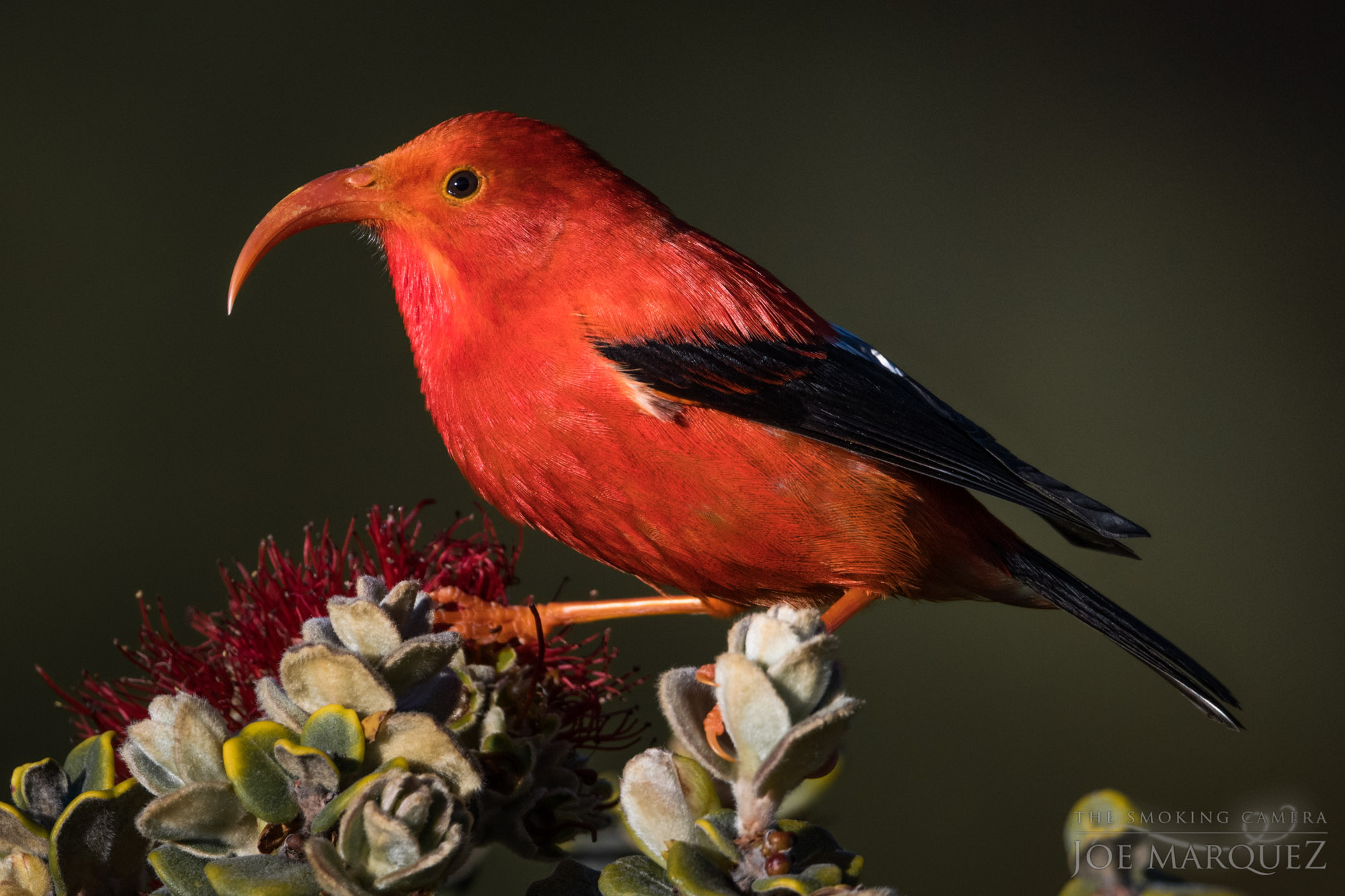
The 'I'iwi or Scarlet Hawaiian Honeycreeper (Vestiaria coccinea)
Although 'I'iwi are still fairly common on most of the Hawaiian islands, it is rare on O'ahu and Moloka'i and no longer found on L?na'i. Most of the decline is blamed on loss of habitat, as native forests are cleared for farming, grazing, and development. Even though it is still plentiful in two parts of its range, it is still listed as a threatened species because of small populations in some of its range and susceptibility to fowlpox and avian influenza. In fact a study has shown that ninety percent of all exposed 'I'iwi die and the other ten percent were weakened but survived. However scientists have been helping restore the island ecosystem by removing alien or non-native species of plants and animals from critical habitat. Many of these so called removal projects have been done on the Big Island of Hawai'i, where efforts continue around Mauna Kea. Populations of lobelia species have declined over the years and because of this the birds are increasingly being found at '?hi'a trees.Iiwi
Advertisements
10 February 2022
Advertisements



